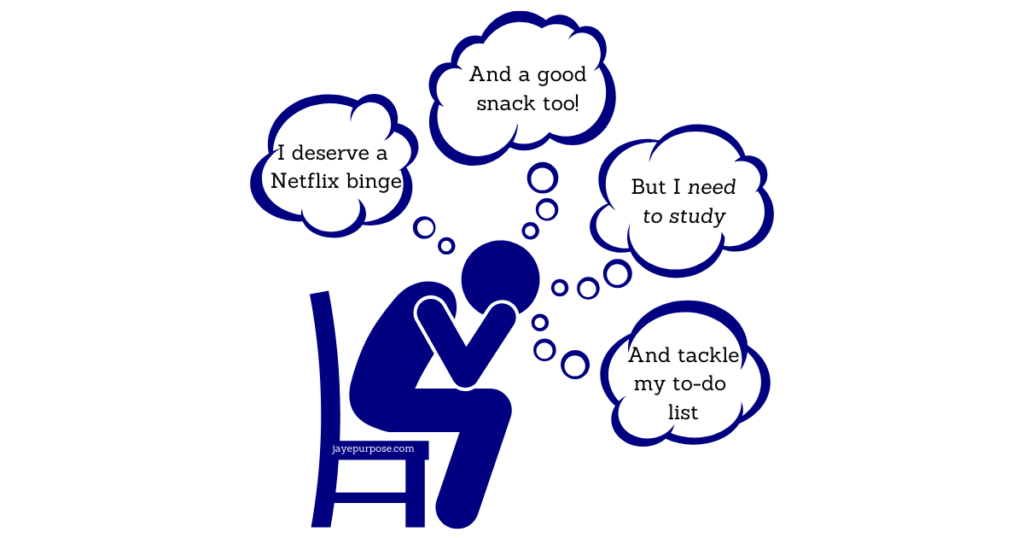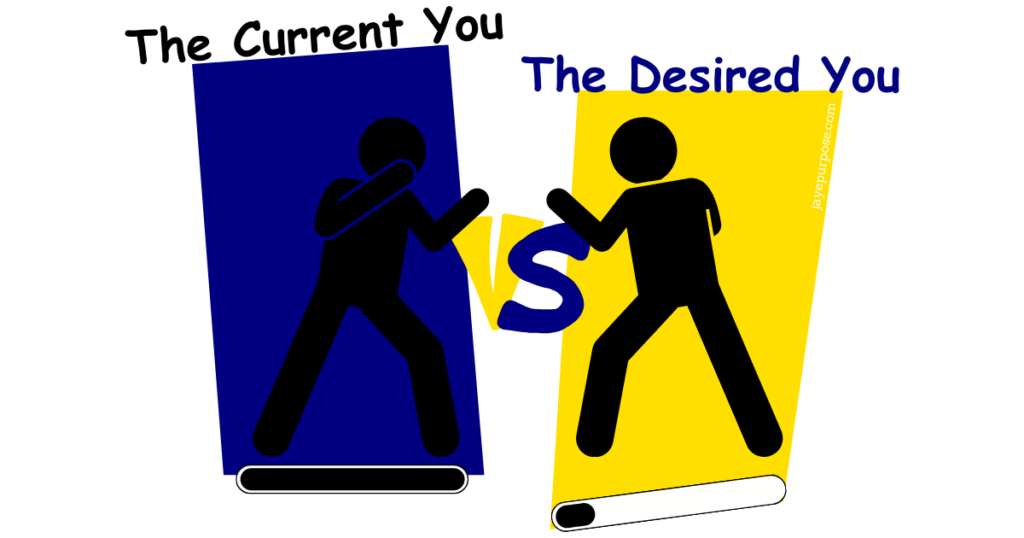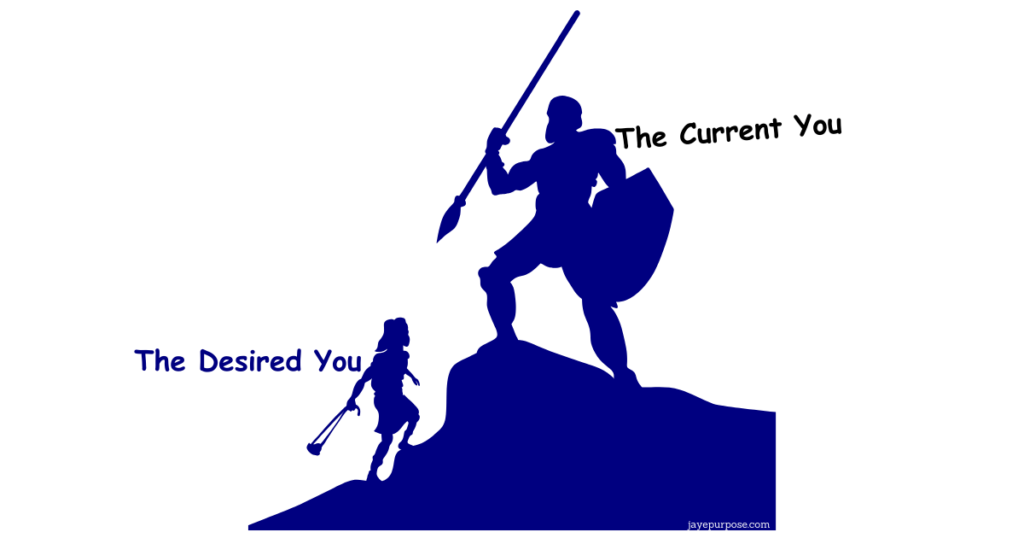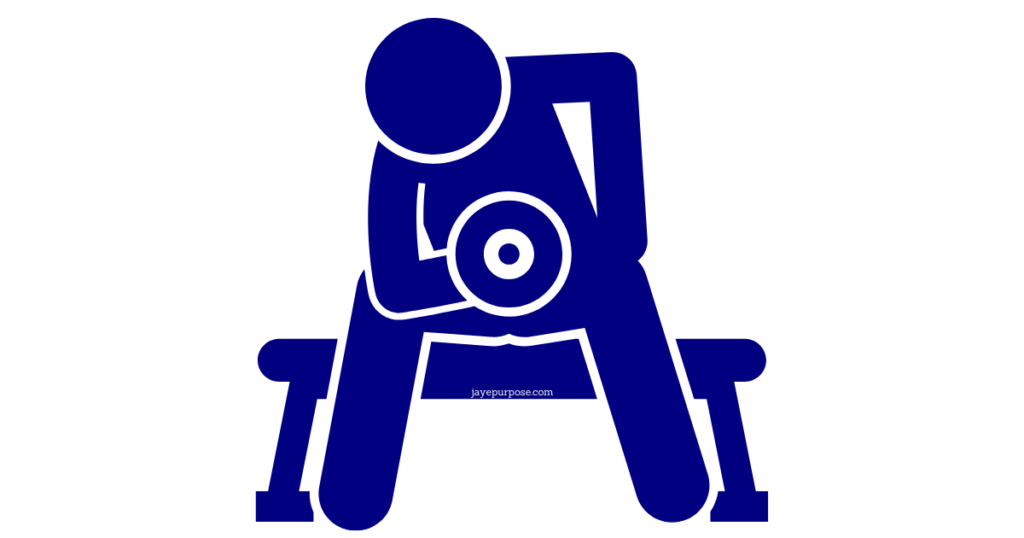
Have you ever set a goal, felt excited about the possibilities, and then found yourself unable to follow through? If you’re human, then I know you’ve been there before!
Whether it’s improving your health, reaching a new level in your career, or transforming your habits, achieving meaningful change often feels like an uphill battle. Why is it so hard to do what we know we need to do?
The answer lies in the conflict between your current self and the future self you’re striving to become.
This post explores the identity shifts required for transformation, offering a roadmap for navigating resistance and aligning one’s actions with one’s aspirations.
The Real Reason You Can’t Do The Things You Need To Do!

Transformation is a universal struggle, but one of the most relatable examples lies in the realm of physical fitness. Whether it’s losing weight or building muscle, the pursuit of a better version of yourself highlights a deeper truth: real change requires more than a goal—it demands a shift in identity.
In this section, we’ll explore how setting a goal awakens a new version of yourself and why the journey to becoming that version is often met with resistance. Through the lens of weight loss, we’ll uncover the battle between your current self and the future self you aspire to become, offering valuable insights into the psychology of transformation.
The Weight Loss Analogy
If there’s one thing everyone can relate to, it’s the desire to change their physical appearance. Whether you’re trying to lose weight or build muscle, almost everyone has pursued one of these goals at some point. Think about what happens when you set that intention: you begin imagining how you’ll look when you reach your goal. Suddenly, you feel compelled to buy healthier foods at the grocery store. Your conversations with friends and family start to revolve around your new diet. Setting the intention awakens a new version of yourself.
This new version comes with specific tasks, skills, and habits necessary to achieve your goal. But here’s the dilemma: only one identity can control your day-to-day actions. Your new intention creates a new “self,” but your current self isn’t ready to relinquish control. When it realizes it’s no longer being nourished, a battle for dominance begins.
The only way to achieve your goal is to do the work required to put the new identity—the one capable of reaching your goal—in charge. And the only way to accomplish that is by crucifying the current you. By “crucify,” I mean systematically dismantling the inhibitions, emotions, desires, and habits tied to your present identity.
This isn’t a one-time event; it’s a long, grueling, and arduous process. The crucifixion becomes a daily decision. Over time, as the current self is starved of its fuel, it grows weaker and eventually fades. How long this takes depends on how deeply rooted your old habits and identity are. If you’ve been feeding your current self for 20 years, it won’t surrender after just a few weeks.
One undeniable truth about this process is that the longer you do the work, the harder it can feel. And that’s why all your goals that are big enough to demand transformation must be approached with the right expectations and a proven system. Your current self won’t go down without a fight.
The Fight for Survival
When we start taking action, we begin to create the next version of ourselves–a version capable of accomplishing our goals. However, every step toward transformation is also a step toward the death of our current self. This current identity isn’t just a concept—it’s a living entity. And like any living being facing a threat to its survival, it fights back.
When our old self senses the possibility of its demise, it resists with everything it has. It fights, scratches, and claws to survive by any means necessary. This is why change is so difficult. Our old self manifests in aggressive ways, pulling us back into old habits and overwhelming us with fear, insecurities, indecision, and doubt. These emotions, behaviors, and even familiar environments are its tools to regain control.
This resistance is one of the biggest reasons why consistency in new habits feels so challenging. Consistency leads to transformation, and transformation threatens the survival of our current identity. To preserve itself, the old self must disrupt our persistence and undermine any new endeavor that poses a threat to its existence.
If this battle is inevitable, the question becomes:
- How do I overcome the relentless pressure my old self brings to the fight every single day?
- How do I navigate when my subconscious is already wired with habits, beliefs, and moral frameworks that make it so easy to slip back into old patterns?
- How do I fight when my current self seems armed with so much firepower?
To Do Bigger Things You Have To Become a Better “YOU”

Every goal you set carries with it an unspoken truth: it demands a new version of you. The person you are today, shaped by your current values, habits, and beliefs, has built the life you currently live.
But to achieve something greater—whether it’s a new milestone, a dream, or a life-changing aspiration—you must grow into a version of yourself capable of attaining it.
In this section, we’ll explore the relationship between goals and identity, breaking down how transformation is both necessary and incremental. Through understanding the interplay between your mind, body, and spirit, you’ll discover why sustainable change requires not just action but alignment with the identity of the person you’re striving to become.
Transformation isn’t just about achieving goals; it’s about growing into the person who makes them possible.
A Bigger Goal Requires a Bigger Identity!
One thing we know to be true is that the person we are today is tied to a certain level of character. Our current values, morals, and habits define the person we’ve become and the life we’ve built. Every goal we set, however, is tied to a different level of character—one that has the capacity to do the work required to achieve and sustain that goal.
Take a moment to reflect: everything you have in your life right now—every relationship you’ve attracted, every success you’ve achieved—is a direct result of the level of character you’ve developed up to this point. To reach a new goal, the same principle applies: transformation is required. The bigger the goal, the greater the transformation must be.
Imagine a character on a scale from 1 to 10. At level 1 is the lowest possible level of character, and at level 10 is the level of enlightenment we might attribute to someone like Jesus Christ. Suppose you’re currently at level 2. Everything you’ve accomplished and attracted so far aligns with a level 2 character. Now, let’s say you set a goal tied to a level 6 character. To achieve that goal, you must grow into a level 6 person. You can’t reach it from where you are now at level 2.
The process of transformation requires starting where you are and growing incrementally. For example, if you aim to lift 315 pounds, you can’t walk into the gym today and lift that weight without injury. Instead, you begin with what you can handle and progressively build your strength over time. The same principle applies to personal growth: transformation is gradual, but every step forward brings you closer to the caliber of character required to achieve your goal.
What is An Identity?
An identity is the culmination of your body, mind, and spirit. Each of these components contributes uniquely to who you are:
- Your mind consists of your thoughts, emotions, and willpower.
- Your body relies on your five senses and physical abilities to interact with the world and carry out tasks.
- Your spirit is rooted in your values, morals, and beliefs.
Together, these elements form your identity. This applies to everyone, not just you, which is why understanding identity is so important in the process of transformation.
To change or undergo transformation, you must first identify what needs to be changed. Transformation isn’t just about what you do; it’s also about how you think, the emotions you experience daily, and the lens through which you see the world—your paradigm. Simply copying someone else’s actions isn’t enough. Why? Because:
- Capability matters: You may not yet have the ability to do what someone else is doing.
- Identity alignment is key: You need to embody the full identity of the person who can walk that path.
Without alignment in morals, values, and beliefs, it becomes impossible to sustain effort toward transformation. For instance, if your belief system doesn’t support high performance, you’ll lack the foundation to consistently perform at a higher level. This is why identity is such a vital piece of the transformation process. It’s not just about actions; it’s about aligning your mind, body, and spirit with the person you aspire to become.
The Surprising Truth About Resistance (And How to Beat It)

Winning the battle for personal growth and transformation requires strategy, persistence, and a shift in perspective. Resistance is not an enemy to be feared but a signal that growth is happening.
By reframing resistance, reducing it strategically, and building capacity through gradual progress, you create a sustainable path to becoming the person capable of achieving your goals.
This process isn’t about sprinting to the finish line; it’s about steady, deliberate steps that align your actions with your ultimate vision. By starting where you are and focusing on consistent, incremental growth, you set yourself up to win the battle and claim victory over your current limitations.
What is Resistance?
Resistance is anything that stands between your current self and your desired self. It can appear in countless forms, but at its core, it is anything that prevents or slows you from doing the work necessary to become who you want to be. Resistance often arises when you set an intention or endeavor upon creative work. It isn’t something you can see but rather a feeling—a force pulling you toward distractions and away from what you know you should be doing. Resistance manifests as procrastination, laziness, self-indulgence, indecision, fear, doubt, apathy, or similar obstacles.
This Is Why You Need Resistance to Grow!?
You might wonder, “Why does resistance exist? Why can’t I just set a goal and effortlessly take the actions necessary to achieve it?” Think of it like exercising: for your body to grow stronger, muscle tissue must be broken down. When you apply effort against resistance during a workout, microscopic tears form in your muscles. The body then uses this stress as a signal to rebuild and grow stronger. In the same way, resistance is necessary for personal growth. Without resistance, there would be no struggle, no growth, and ultimately no transformation. It is only by applying effort against resistance that you can develop the character required to achieve your goals.
While resistance makes things difficult, it also makes the impossible possible. However, resistance is useless until effort is applied to it. Resistance alone won’t transform you; it’s the deliberate choice to push against resistance that fosters growth. When resistance shows up—and it will—you can either fight it with effort and grow stronger, or you can succumb to it, allowing it to win. Giving in to resistance leads to what can be called “spiritual atrophy,” akin to the physical atrophy of unused muscles. Spiritual atrophy is the deterioration of growth and progress.
Character is forged through suffering: If we were to frame this concept as a formula, it would look like this: Resistance + Effort = Pain. Pain is the mechanism through which transformation occurs. Think of grapes being crushed to make wine, coal being pressurized to form diamonds, or seeds being buried to grow into fruitful plants. Each of these transformations involves a process of stress, pressure, or discomfort. The same principle applies to human beings.
When you apply effort against resistance, it creates pain. In the physical sense, this pain comes from the tearing of muscle tissue during exercise. Spiritually, resistance creates a similar type of pain—psychological or emotional discomfort. This can manifest as decision fatigue, cognitive strain, or internal conflict. While this pain is uncomfortable, it is also essential. Pain is the very mechanism your spirit uses to transform into your desired identity.
Pain is the Foundation of Growth. While resistance can feel overwhelming and painful at times, it is through this struggle that your character is forged. The pain that you might instinctively shy away from is the very process that strengthens you, builds resilience, and moves you closer to your goals. Embracing resistance, applying effort against it, and enduring the pain it creates are all necessary parts of the journey toward transformation and self-improvement.
Want To Explore More?
The process of becoming is a journey that most don’t dare take control of. Since you’re here on this page, obviously you’re part of that group! If you want to dig deeper into the journey of personal transformation, I invite you to take a purpose assessment!
Consider this to be the first step on a journey to fulfillment and freedom. If you want to take control of your life, you’d better be steering the ship in the right direction. What better way than to overcome the mental health crisis that wandering has brought upon us than to align ourselves with our destiny?
In just a few taps on your phone…gain profound insights into where you currently stand in your pursuit of purpose AND figure out what the next steps are to a life of clarity and freedom!
Summary: The Essence of Becoming
To willingly and consistently pursue and endure intentional pain for the purpose of self-building—especially against one’s own volition—is the essence of becoming. Just as a novice weightlifter cannot walk into a gym and lift heavy weights on day one, a version of yourself must die before you can reach your next level. Transformation requires the deliberate pursuit and application of resistance. Until you embrace this process, growth will remain difficult or beyond your reach.
You are not a procrastinator, lazy, or cursed. You simply need to evolve into the version of yourself capable of doing what needs to be done.
The Two Paths to Change
Change happens in two ways:
- An Emotional Event – A sudden, impactful experience that forces transformation. However, this is beyond your control.
- Repetitive Exposure to an Opposing Perspective – Consistent, intentional action that challenges your current mindset and habits. This is the path you can control.
It is through the latter—intentional and repetitive effort—that you gain the ability to consistently do the things you know you need to do but currently cannot. Only then will true transformation occur.